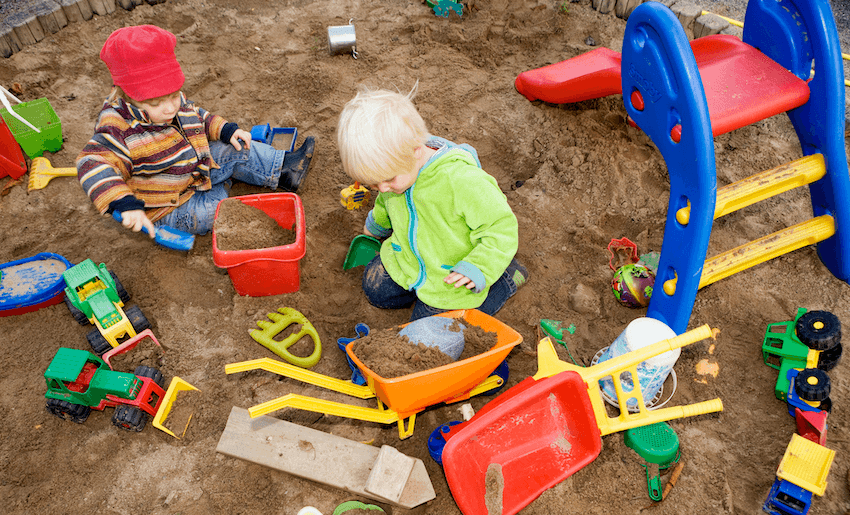Of the huge funding boost coming for early childhood education, Playcentre has been left with just the crumbs, writes Kate Barber.
Amid all the celebration of the $430m funding boost for early childhood education (ECE) announced in this year’s budget, little attention was paid to the plight of Playcentre. The organisation has been earmarked just $3.1m over the next four years, leaving its centres and families stretched and at risk.
This is despite ample research showing that Playcentre is at the heart of optimal outcomes for children and is the best model of what a quality ECE experience looks like.
Neuroscience educator and child development expert Nathan Wallis often points to the value of Playcentre. You know that “number 8 wire mentality” New Zealanders are famous for? According to Wallis, Playcentre exemplifies the optimal conditions for supporting creativity, initiative and resourcefulness in children.
But still, Playcentre is the poor cousin in terms of funding of early childhood education.
The ECE sector comprises both teacher-led services, including kindergartens and preschools, and parent-led, such as Playcentre. From the way it slices the loaf, it’s clear that the government’s priority is teacher-led services. More and more families have both parents in work, meaning children are spending more time in care and from earlier ages.
Playcentre offers a unique early learning experience. As a parent cooperative, members work together to manage their centre and to run sessions. Children initiate and direct their own play, and parents stay and play with their child and other children.
Playcentre also runs an adult education programme that supports adults in their role as parents and educators. The parent qualifications help centres meet their licensing requirements, although session facilitators are often employed to meet the government’s increasingly stringent standards of compliance.
The Playcentre model offers something that teacher-led ECE options can’t. Fundamentally, Playcentre seeks to strengthen the bond between each child and their primary carer, and beyond that to grow connections between parents and whānau in a community.
Adult/child ratios are higher and interactions between parents and tamariki have special value because they are grounded in the wider connections between whānau.
Additionally, Playcentre is all about child-led free play. In a society increasingly preoccupied with teaching preschoolers cognitive skills like reciting the alphabet and counting to 20 so that they will be “ready for school”, Playcentres embrace free play as the means by which children learn. Children are in charge of their play, and responsive grown-ups support them, without interrupting or taking over.
Playcentre was founded nearly 80 years ago based on these understandings about what is best for our children. Today, we have a compelling body of research around brain development that bears out these core principles.
The research shows the profound influence of a child’s relationship with their most responsive parent/carer in the early years. Again, as Nathan Wallis says, “Playcentre is one of the few early childhood movements in the world that seeks to keep the parent and child together for the benefit of the child – and the parent – rather than separate them for the benefit of the economy.”
According to the research, what matters the most for our children’s developing brains between the ages of two and seven is that their social and emotional needs are met, and that they have ample opportunities for self-directed, uninterrupted free play. The cognitive skills are not nearly as important as you might think, and in fact persisting in teaching children their numbers and letters when their brains aren’t ready can damage their perception of themselves as learners.
What’s important are the dispositions they develop: how long they can sustain their attention; how many times they try again when they fail; how well they can link their ideas to those of others. The list goes on and on.
The play-based, family-centred Playcentre model encapsulates all the elements of our national ECE curriculum, Te Whāriki.
Indeed, Nathan Wallis says if Te Whāriki were combined with the latest neuroscience research to produce a world-leading and research-informed learning environment for 2020, it would be indistinguishable from Playcentre.
Yes, the government needs to support our teachers and teacher-led services because they are valuable and necessary. Many families need to have both parents in paid work in order to survive. In no way is this to dismiss the amazing mahi of our ECE teachers – they are dedicated and passionate, and they need support.
But when there is an alternative option that can deliver an early childhood education of a high quality, one that is so beautifully in song with what the research tells us is optimal for our young children, this should not be discounted either. It certainly should not be left to nibble on just the crumbs.
